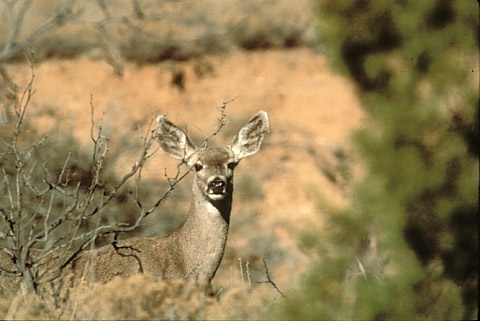Mule Deer Restoration
Tuesday, June 27th, 2017This is Passport to Texas
The mule deer population is struggling in parts of the Big Bend region of far West Texas.
We’ve been trying to boost our populations in the Black Gap area since about 2015.
Shawn Gray oversees mule deer restoration. Unlike other mule deer populations, those at Black Gap never fully recovered after the last drought.
We had been monitoring that population for years, and it just remained stagnant. And so, the next decision we made was, well, let’s put some animals down there and try to boost it and see if we can’t get the population trending upward.
During population surveys last fall, biologists identified an available of surplus of animals at Elephant Mountain Wildlife Wildlife Management, and one private ranch in Pecos County. Using the helicopter and net gun method, they trapped the animals.
Once we caught them, we radio-collared and tagged them. We gave them a series of injections for health reason, and then loaded them in trailers and took them down to release them.
Shawn Gray says this spring they moved 98 female mule deer to the Black Gap Wildlife Wildlife Management Area and to the adjacent El Carmen Land & Conservation Company, which together comprise 135,000 contiguous acres dedicated to wildlife and habitat conservation.
Of those radio-collared animals, we monitor intensively, looking at survival and movement—habitat use. We use all those findings to help improve the habitat and help improve our survival.
The Wildlife Restoration Program supports our series.
For Texas Parks and Wildlife, I’m Cecilia Nasti.



 Passport to Texas is a
Passport to Texas is a  Passport to Texas is made available by:
Passport to Texas is made available by: